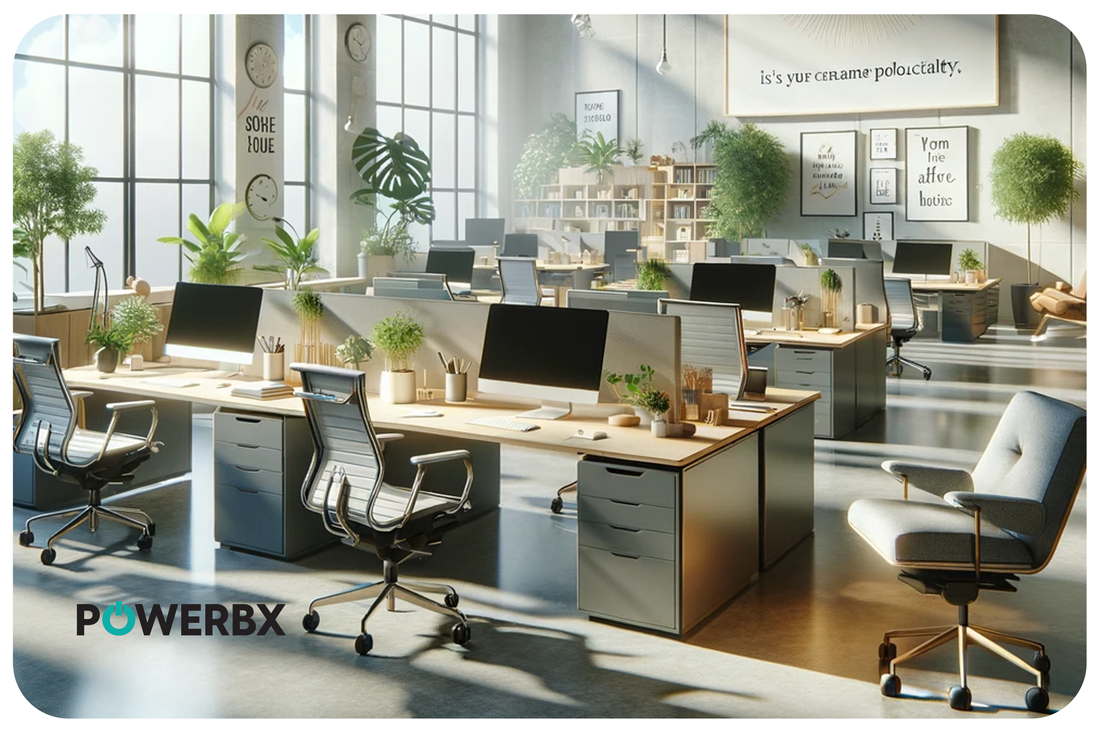How Does Workspace Psychology Shape Productivity
The layout and ambiance of a workplace have a significant impact on how productive and satisfied employees are. Workspace psychology is based on an understanding of the complex dance that occurs between individuals and their work environments. As we explore this field, we discover that PowerBx, a technical innovator in space management systems, is an outstanding example of innovation, coordinating workspaces that improve well-being and collaboration in addition to functionality.
1. Open-Plan Offices

According to a 2019 Savills UK survey, 37% of participants in open-plan offices thought the layout had a detrimental effect on output. High noise levels can be problematic since they make it difficult to focus and communicate. Encourage a diverse workspace strategy to combat this. Consider designating specific areas, including casual gathering areas and quiet nooks for concentrated study, for a variety of tasks, whether at home or in the office. This customized strategy is consistent with maximizing workspace dynamics.
2. Health and Well-Being
A meta-analysis published in 2021 highlighted health risks connected to open-plan offices, which raise stress levels. Promote holistic factors in addition to the ergonomics that are traditionally the focus. As to the findings of a 2003 study by the World Green Building Council, better lighting and ventilation in the office can lead to an 11% increase in productivity. Encouraging mobility through amenities such as bicycle parking demonstrates an additional level of dedication to the well-being of staff members.
3. Digital Distractions
Open-plan workspaces can unexpectedly intensify digital distractions, particularly with the growing popularity of instant messaging apps. This challenge becomes even more pronounced in a hybrid work model where effective communication is pivotal for success. It's crucial to foster clear communication practices, minimize unnecessary digital interruptions, and optimize the digital workspace to ensure seamless collaboration among team members. By addressing these aspects, organizations can navigate the potential downsides of open-plan workspaces in the context of a blended work model, fostering an environment conducive to efficient teamwork and productivity.
4. Tailoring Workspace for Task Focus
Workspace design extends beyond ergonomic considerations, playing a substantial role in task focus and productivity. Acknowledging the diversity of work styles is crucial; for instance, while a messy workspace might hinder creativity for some, it could inspire others. Embracing neurodiversity, it's essential to recognize and respect varied preferences and cognitive processes. A thoughtful approach involves suggesting customizable office layouts that cater to a spectrum of tastes and work styles, fostering an inclusive and adaptable environment that enhances productivity and creativity for all employees.

5. Ergonomics
Utilizing ergonomic techniques is vital to reducing the risk of injuries and fatigue, thereby promoting overall health and sustained long-term productivity. Emphasizing the significance of customized desk arrangements tailored to different job roles and functions within the company is essential. Additionally, highlighting the importance of proper monitor placement and comfortable seating further contributes to creating a workspace that prioritizes employee well-being and supports sustained productivity.
6. Design and Employee Productivity
Savills UK research reveals that 65% of workers believe that a well-designed office enhances productivity. Supporting this perspective, it's crucial to promote inclusive design practices that involve the workforce, aiming to increase employee autonomy and job satisfaction. Regular feedback meetings become instrumental in ensuring that the workspace continually aligns with the evolving needs of the workforce, fostering a dynamic and responsive environment that enhances overall productivity and job happiness.
7. Colors in Focus
The choice of paint colors holds the power to influence performance and atmosphere in the workplace. Recommend using color strategically to evoke specific moods; for instance, suggesting blue for concentration and yellow for optimism. By selecting colors purposefully, organizations can shape a positive work atmosphere that aligns with their goals and promotes the desired emotional and psychological responses among employees.
8. Tailoring Spaces for Specific Tasks
Aligning tasks with workspace design is crucial, as employees are most productive when the two naturally complement each other. Encourage businesses to prioritize customization in facility design, ensuring it accommodates a range of uses. By doing so, organizations can maximize efficiency and cater to the diverse needs of different jobs and positions within the firm, fostering an environment that enhances overall productivity and effectiveness.
9. The benefits of office plants

Adding plants to the workspace has proven benefits, like reducing stress and improving air quality. They contribute to employee well-being and productivity by naturally purifying the air, with common choices like Peace Lilies and Spider Plants. Studies indicate a 15% performance improvement when employees are surrounded by household plants, enhancing the overall work environment. Eye-catching varieties like Zebra Plants or Bamboo Palms are recommended for improved aesthetics.
Moreover, office plants stimulate creativity by engaging the senses, with vibrant options like Hens and Chicks or Cypress Vines fostering creative thinking. These plants also serve practical purposes, reducing background noise in open-concept offices. Taller plants such as 'Anita' Dragon Tree or Snake Plant strategically placed absorb excess chatter, creating a quieter and more focused work setting. Overall, office plants contribute to reduced stress, increased talent attraction, and a more eco-friendly workplace.
Conclusion:
A thorough understanding of the psychology of design is necessary to navigate the complexities of modern work, which calls for more than simply a practical workstation. Uncovering this psychology will require the PowerBx community to design workspaces that are committed to improving the human experience at work, professionally, and in knowledge. How does the psychology of the workspace affect output? For PowerBx, the key is to optimize chores and use smart design to create a culture of creativity, engagement, and continuous productivity.
PowerBx Solutions and Services:
Discover the transformative solutions and services offered by PowerBx. From innovative space management solutions to holistic workplace optimizations, PowerBx is committed to revolutionizing workspace dynamics. Explore our comprehensive suite of services designed to enhance collaboration, boost productivity, and create work environments that inspire success. Experience the PowerBx difference in shaping the future of work.

